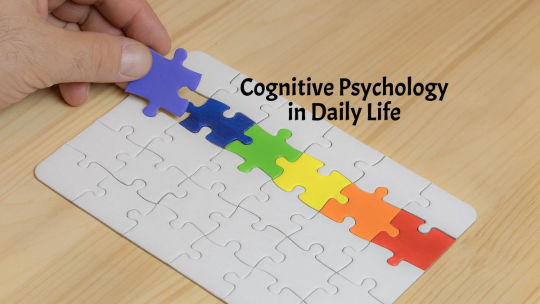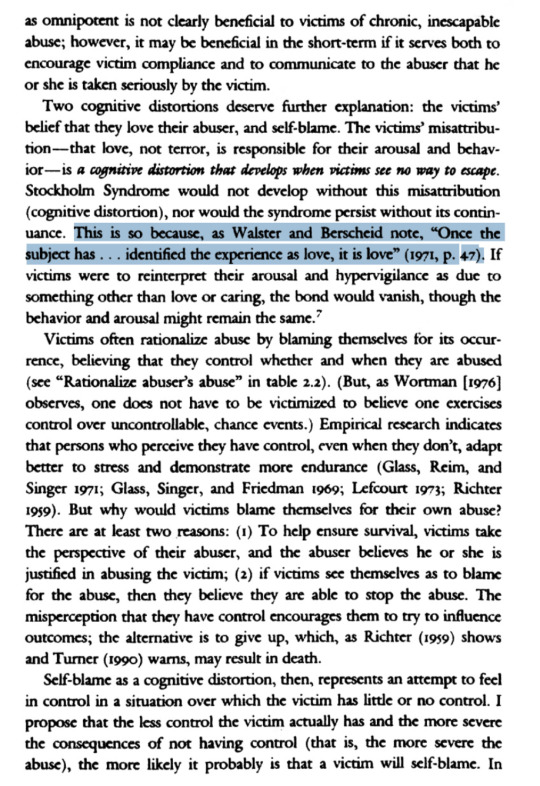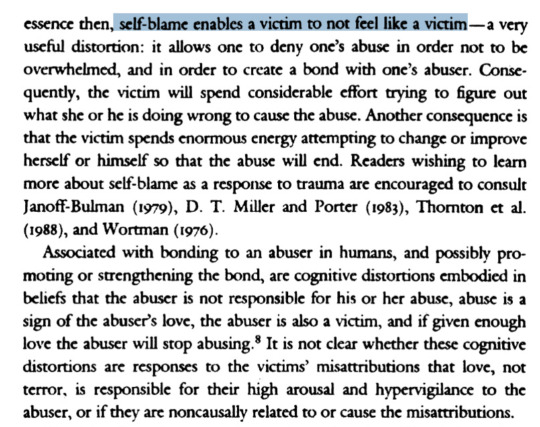#Human Cognition
Explore tagged Tumblr posts
Text
The Philosophy of Curiosity
The philosophy of curiosity explores the nature, origins, and implications of human curiosity, which drives individuals to seek knowledge, explore new experiences, and ask questions about the world around them. Curiosity has long been recognized as a fundamental aspect of human cognition and behavior, playing a central role in scientific inquiry, philosophical reflection, and everyday life. Here are some key aspects and theories within the philosophy of curiosity:
Epistemic Curiosity: Epistemic curiosity refers to the desire for knowledge and understanding, motivating individuals to seek information, explore new ideas, and engage in intellectual pursuits. Philosophers have debated the nature of epistemic curiosity, its origins in human cognition, and its role in shaping scientific progress and cultural development.
Aesthetic Curiosity: Aesthetic curiosity pertains to the exploration of beauty, art, and creativity, driving individuals to seek out new experiences, appreciate diverse forms of expression, and engage with works of literature, music, visual art, and other cultural artifacts. Aesthetic curiosity raises questions about the nature of artistic inspiration, cultural interpretation, and subjective experience.
Existential Curiosity: Existential curiosity concerns the exploration of existential questions about the nature of existence, meaning, and purpose, motivating individuals to reflect on their own lives, values, and beliefs. Existential curiosity encompasses inquiries into topics such as the nature of consciousness, the search for transcendence, and the quest for personal fulfillment.
Philosophical Curiosity: Philosophical curiosity involves the pursuit of philosophical inquiry, critical thinking, and self-reflection, prompting individuals to question assumptions, challenge conventional wisdom, and explore fundamental concepts such as truth, morality, justice, and reality. Philosophical curiosity underlies the practice of philosophy as a discipline and informs broader intellectual endeavors.
Ethical Curiosity: Ethical curiosity concerns the exploration of ethical questions and moral dilemmas, motivating individuals to consider the consequences of their actions, empathize with others, and strive for moral growth and development. Ethical curiosity raises questions about the nature of moral values, ethical principles, and the pursuit of the good life.
Cognitive Curiosity: Cognitive curiosity encompasses the exploration of cognitive processes, mental states, and psychological phenomena, driving individuals to understand how the mind works, how knowledge is acquired, and how beliefs are formed. Cognitive curiosity informs research in fields such as psychology, neuroscience, and cognitive science.
Cultural Curiosity: Cultural curiosity involves the exploration of diverse cultures, traditions, and worldviews, prompting individuals to learn about different societies, languages, and customs, and to appreciate the richness of human diversity. Cultural curiosity fosters intercultural understanding, global awareness, and cross-cultural communication.
Metacognitive Curiosity: Metacognitive curiosity pertains to the exploration of one's own cognitive processes and learning strategies, motivating individuals to reflect on their own thinking, monitor their own understanding, and adapt their learning strategies to achieve greater intellectual growth and self-improvement.
Overall, the philosophy of curiosity explores the multifaceted nature of human curiosity and its profound influence on knowledge, creativity, personal growth, and the human condition.
#philosophy#epistemology#knowledge#learning#chatgpt#education#psychology#Epistemic curiosity#Aesthetic curiosity#Existential curiosity#Philosophical curiosity#Ethical curiosity#Cognitive curiosity#Cultural curiosity#Metacognitive curiosity#Human cognition#Inquiry#Exploration#Intellectual curiosity#Human experience#Curiosity and creativity#Curiosity and learning
62 notes
·
View notes
Text
The Myth of Adult Education: Why the Andragogy vs. Pedagogy Divide Fails
One of the most pervasive myths in education today is that adults and children require fundamentally different approaches to learning. This belief has fueled an entire industry dedicated to “andragogy,” a concept coined to define the supposed unique ways adults learn. But is this dichotomy—adult education versus child education—real? I argue it is not. Instead, this divide reflects social…
#adult education#adult learning challenges#andragogy#cognitive development#education myths#education philosophy#educational reform#effective teaching principles#human cognition#individualized learning#learning engagement#learning motivation#learning theory#lifelong learning#pedagogy#philosophy of education#relevance in education#social barriers in education#societal impact on learning#teaching methods#universal education framework
0 notes
Text
#adaptability#AI challenges#AI Development#AI in the workplace#AI limitations#AI trends#AI vs human intelligence#algorithms#Artificial Intelligence#artificial intelligence models#bias in AI#cognitive psychology#collaboration#computational techniques#creativity#creativity in AI#data processing#Data Security#deep learning#emotional intelligence#ethical considerations#future of AI#future of human intelligence#human cognition#human intelligence#human vs AI#IQ tests#Job search#learning process#machine intelligence
1 note
·
View note
Text
Cognitive Psychology in Daily Life – Fastlane Freedom
Cognitive psychology is a branch of psychology that focuses on the study of mental processes, including how people perceive, think, remember, and solve problems. It explores the cognitive aspects of human behaviour, such as attention, memory, language, perception, decision-making, and problem-solving. The key objective of cognitive psychology is to understand the internal mental processes that…

View On WordPress
#cognitive enhancement#the stroop effect#growth mindset#the stroop effect experiment#mindfulness#active listening#cognitive psychology#psychological well-being#problem-solving#mindfulness techniques#problem-solving skills#cognitive psychology in daily life#mental processes#human cognition#learning strategies#spaced repetition#retrieval practice#decision-making
0 notes
Text

Remember: The burning sensation is part of the process.
#Mouthwashing#blood#body horror#Emphasizing here that this is in reference to a media and character and not a cry for help on my end.#Mouthwashing is one of those games that tickles my brain and checks all the boxes for my niche interests -#-but it wasn't something that got the silly comic part in my cortex firing up. My analysis brain is eating well though!#What said...It is impossible for me to see this scene and not say out loud: “Me in the middle of my work day".#While there is a lot more going on with curly I personally resonated a lot with his struggles with burnout.#Burnout feels like mouthwash to me. That you keep rinsing out your mouth trying to get rid of the rotting smell#but it's just surface level solutions. The real cure requires something far more significant to actually make a difference.#The job 'is hard' and 'everyone struggles'. It's part of the process right? You're tired? Anxious? Depressed? Us too! Chin up!#Actually I resonated with a lot of things within Curly (this is a curly positive space - he's not perfect. He's just human).#One thing being his desire to see the good in people and believe in their potential.#Because here's the thing. Some people truly do just need someone in their corner who stands by them so they can grow and improve.#And some people will take advantage of your kindness. You focus so much on their humanity while you stop being a person to them.#The horrifically toxic relationship persists because Curly tries to see the bigger picture and believes in the good within.#Anyone who has lived through constantly trying to reframe the hurt as something else knows-#-just how many excuses your brain will make to avoid cognitive dissonance. It's human psychology.#Jimmy sucks so bad. But we the audience have the privilege of not having years of baggage associating him in our minds as 'friend'.
439 notes
·
View notes
Text
Dukat becomes worse the more pitiful he is. Winn becomes more pitiful the worse she gets.
Dukat has these moments where you could almost feel sorry for him, but he just doubles down on how horrible he is in a way that makes you forget that moment of pity because he genuinely and sincerely does not think he’s done anything wrong, ever.
Winn has moments where she seems to be weilding her cruelty like armor, but then has a moment of vulnerability and doubt that make you realise you can’t quite hate her, you just feel sorry for her instead, because some part of her seems to know she’s going down a bad path but she is so terrified she can’t make herself turn back.
Their character arcs look similar on a surface level but are very, very different trajectories.
#star trek#star trek ds9#winn adami#skrain dukat#stella talks#.also winn is a really attractive women so she gets extra sympathy points from me on that basis to begin with—#.what who said that.#.i think both their actors do a wonderful job of making them feel very… human.#.dukat comes across as genuinely seeing himself as a hero and having that cognitive dissonance baked in. he sells it as sincere.#.winn… god the things i could say about her actress making her feel so very alive���#.gimme some time to rewatch all the winn episodes and i’m going to turn into a winn apologist blog.#.yeah she did all that but she was pretty and i think kira should have kissed her.#.so was she REALLY in the wrong hmmmm????#.and having been recently converted to kira/ziyal shipping and being a big fan of keiko/everyone the sapphic polycule is getting fun.#.<- the sapphic polycule has the side perk of being one which would make dukat utterly baffled.
102 notes
·
View notes
Text
"It's okay to be angry, you're just human after all. ☺️"
Okay.
"Empathy is what makes you human. 🥰"

#I've been so alienated my entire life of course I'm not going to have affective empathy for humans even if I can cognitively empathize.#aspd#actuallyaspd#cluster b#szpd#actuallyszpd#cluster a#npd#actuallynpd
39 notes
·
View notes
Text
Are we waking up to reality yet? Anne Frank had nothing to do with Gaza, so there is no reason to deface her statue unless the real reason is nothing to do with Gaza.


This is a pretty low thing to do, but I'm sure they're going to find a way to sink even lower.
#spilled thoughts#current events#israel hamas war#news on gaza#gaza news#gaza#internalized beliefs#internalized antisemitism#antisemitism#personal development#campus protests#student protests#university protests#israel palestine conflict#anti israel propaganda#humanity#human experience#news update#anne frank#jew hatred#jew haters#self image#self concept#lack of awareness#denial#cognitive dissonance#hamas apologists#leftist antisemitism#leftist hypocrisy#uk protest
73 notes
·
View notes
Text
My belief with no real proof other than the trivial knowledge that bears have been observed gazing out in wonder at beautiful scenes before them, but I think bears* are just as sapient as humans there's just something that makes them snap and go batshit aggro whenever they see a human being
*not pandas
#i think something went down between bears and humans somewhere in evolution that made us hate each other#bears#i also believe pandas would be a lot smarter if we replaced their bamboo with a juicy steak#their stomachs are still evolutionary specialized for omnivorous diets it's just bamboo is historically plentiful in their natural habitat#and it's a known fact among humans that a vegan diet without adequate protein can cause brain fog and cognitive decline
43 notes
·
View notes
Text
Decoding the Relationship Between Beliefs and Perspectives
The Influence of Beliefs on Perspectives:
Beliefs act as the cornerstone of our perspectives. They are the result of our experiences, upbringing, culture, and personal reflections. These deeply rooted convictions form the foundation upon which we construct our understanding of the world.
Cultural and Societal Influence: Our beliefs are profoundly influenced by the culture and society we are born into. These inherited beliefs serve as a template for our worldview, shaping our perception of what is right, wrong, acceptable, or taboo. For example, in some cultures, collectivism is highly valued, while individualism takes precedence in others. These differing cultural beliefs fundamentally alter how individuals perceive their roles in society.
Confirmation Bias: Once we hold a belief, we tend to seek out information that confirms it, further solidifying our perspective. This confirmation bias can lead us down a path of selective exposure, where we only expose ourselves to information that aligns with our pre-existing beliefs. This phenomenon not only reinforces our beliefs but also narrows our perspective, limiting our ability to consider alternative viewpoints.
The Reciprocal Relationship:
While beliefs influence perspectives, the relationship is reciprocal. Our perspectives, in turn, can shape our beliefs.
Perspective and Empathy: When we strive to understand the perspectives of others, it can challenge our existing beliefs. Engaging with diverse perspectives fosters empathy and allows us to see the world through different lenses. As a result, we may reevaluate and even alter our beliefs based on this broader understanding.
Critical Thinking: Developing critical thinking skills can empower us to critically examine our beliefs. By evaluating evidence, considering counterarguments, and exposing ourselves to differing viewpoints, we can refine our beliefs and cultivate more informed perspectives.
Conclusion:
Our beliefs and perspectives are intricately woven together, forming a tapestry that defines our understanding of the world. Recognizing the profound influence of beliefs on perspectives, as well as the reciprocal relationship between the two, is a crucial step in navigating the complex landscape of human cognition.
As we continue to explore the dynamics between beliefs and perspectives, we gain valuable insights into human behavior, decision-making, and the shared tapestry of our interconnected world. It is through this understanding that we can strive for a more empathetic, open-minded, and harmonious coexistence, built upon a foundation of mutual respect for the diverse perspectives that shape our reality.
#philosophy#epistemology#knowledge#learning#education#chatgpt#ethics#psychology#politics#Beliefs#Perspectives#Worldview#Confirmation Bias#Critical Thinking#Empathy#Cultural Influence#Societal Norms#Human Cognition#Understanding Others#Open-Mindedness#Diversity of Thought#Reciprocal Relationship#Personal Growth#Philosophy of Belief
2 notes
·
View notes
Text
Ngl, I’m actually pretty uncomfortable reading my old posts defending the goodness of the common people and their right to defend themselves—as persecuted groups or as individuals—from hierarchical tyranny, given how easily in this current irl moment a not-insignificant amount of people have fallen into supporting an active genocide, because I cannot separate this from how much pushback I got (and still sometimes get) for being consistent in my politics
#I don’t want to say it’s triggering#because that’s not the right word#but what do you call the thing you feel#when you spent the last 1+ year arguing that common people are usually good#and hierarchies of oppression are bad even if certain individuals you like are at the top#that violence is not all inherently bad#and violence against oppression is in fact good#all topics that are major themes affirmed in the literal texts being discussed#only to have people YELLING at me that i am wrong#because THEY believe that the only thing that makes you a good person#is joining the corrupt hierarchy and affirming status quo#only for me to turn on the news and see this same logic of disaggreers#being used to justify an active genocide#maybe it’s cognitive dissonance#because my understanding of fiction is always couched within the reality it was created in#but the fact that the same arguments can be used to justify crimes against humanity#in both fiction AND reality?#it makes the act of fandom discourse less… enjoyable#less innocuous
95 notes
·
View notes
Text




Loving to Survive: Sexual Terror, Men's Violence, and Women's Lives by Dee L.R. Graham
#dee l.r. graham#intimate partner violence#domestic violence#literature#the human custom of wrong love#trauma bonding#cognitive distortions#text#once the subject has identified the experience as love it is love#romantic love was invented to manipulate women#expiring for love is beautiful but stupid
56 notes
·
View notes
Text
Brain pathways that control dopamine release may influence motor control
New Post has been published on https://thedigitalinsider.com/brain-pathways-that-control-dopamine-release-may-influence-motor-control/
Brain pathways that control dopamine release may influence motor control


Within the human brain, movement is coordinated by a brain region called the striatum, which sends instructions to motor neurons in the brain. Those instructions are conveyed by two pathways, one that initiates movement (“go”) and one that suppresses it (“no-go”).
In a new study, MIT researchers have discovered an additional two pathways that arise in the striatum and appear to modulate the effects of the go and no-go pathways. These newly discovered pathways connect to dopamine-producing neurons in the brain — one stimulates dopamine release and the other inhibits it.
By controlling the amount of dopamine in the brain via clusters of neurons known as striosomes, these pathways appear to modify the instructions given by the go and no-go pathways. They may be especially involved in influencing decisions that have a strong emotional component, the researchers say.
“Among all the regions of the striatum, the striosomes alone turned out to be able to project to the dopamine-containing neurons, which we think has something to do with motivation, mood, and controlling movement,” says Ann Graybiel, an MIT Institute Professor, a member of MIT’s McGovern Institute for Brain Research, and the senior author of the new study.
Iakovos Lazaridis, a research scientist at the McGovern Institute, is the lead author of the paper, which appears today in the journal Current Biology.
New pathways
Graybiel has spent much of her career studying the striatum, a structure located deep within the brain that is involved in learning and decision-making, as well as control of movement.
Within the striatum, neurons are arranged in a labyrinth-like structure that includes striosomes, which Graybiel discovered in the 1970s. The classical go and no-go pathways arise from neurons that surround the striosomes, which are known collectively as the matrix. The matrix cells that give rise to these pathways receive input from sensory processing regions such as the visual cortex and auditory cortex. Then, they send go or no-go commands to neurons in the motor cortex.
However, the function of the striosomes, which are not part of those pathways, remained unknown. For many years, researchers in Graybiel’s lab have been trying to solve that mystery.
Their previous work revealed that striosomes receive much of their input from parts of the brain that process emotion. Within striosomes, there are two major types of neurons, classified as D1 and D2. In a 2015 study, Graybiel found that one of these cell types, D1, sends input to the substantia nigra, which is the brain’s major dopamine-producing center.
It took much longer to trace the output of the other set, D2 neurons. In the new Current Biology study, the researchers discovered that those neurons also eventually project to the substantia nigra, but first they connect to a set of neurons in the globus palladus, which inhibits dopamine output. This pathway, an indirect connection to the substantia nigra, reduces the brain’s dopamine output and inhibits movement.
The researchers also confirmed their earlier finding that the pathway arising from D1 striosomes connects directly to the substantia nigra, stimulating dopamine release and initiating movement.
“In the striosomes, we’ve found what is probably a mimic of the classical go/no-go pathways,” Graybiel says. “They’re like classic motor go/no-go pathways, but they don’t go to the motor output neurons of the basal ganglia. Instead, they go to the dopamine cells, which are so important to movement and motivation.”
Emotional decisions
The findings suggest that the classical model of how the striatum controls movement needs to be modified to include the role of these newly identified pathways. The researchers now hope to test their hypothesis that input related to motivation and emotion, which enters the striosomes from the cortex and the limbic system, influences dopamine levels in a way that can encourage or discourage action.
That dopamine release may be especially relevant for actions that induce anxiety or stress. In their 2015 study, Graybiel’s lab found that striosomes play a key role in making decisions that provoke high levels of anxiety; in particular, those that are high risk but may also have a big payoff.
“Ann Graybiel and colleagues have earlier found that the striosome is concerned with inhibiting dopamine neurons. Now they show unexpectedly that another type of striosomal neuron exerts the opposite effect and can signal reward. The striosomes can thus both up- or down-regulate dopamine activity, a very important discovery. Clearly, the regulation of dopamine activity is critical in our everyday life with regard to both movements and mood, to which the striosomes contribute,” says Sten Grillner, a professor of neuroscience at the Karolinska Institute in Sweden, who was not involved in the research.
Another possibility the researchers plan to explore is whether striosomes and matrix cells are arranged in modules that affect motor control of specific parts of the body.
“The next step is trying to isolate some of these modules, and by simultaneously working with cells that belong to the same module, whether they are in the matrix or striosomes, try to pinpoint how the striosomes modulate the underlying function of each of these modules,” Lazaridis says.
They also hope to explore how the striosomal circuits, which project to the same region of the brain that is ravaged by Parkinson’s disease, may influence that disorder.
The research was funded by the National Institutes of Health, the Saks-Kavanaugh Foundation, the William N. and Bernice E. Bumpus Foundation, Jim and Joan Schattinger, the Hock E. Tan and K. Lisa Yang Center for Autism Research, Robert Buxton, the Simons Foundation, the CHDI Foundation, and an Ellen Schapiro and Gerald Axelbaum Investigator BBRF Young Investigator Grant.
#anxiety#author#autism#Behavior#Biology#Brain#Brain and cognitive sciences#brain research#career#cell#cell types#Cells#classical#clusters#Disease#effects#emotion#Foundation#Health#how#human#human brain#it#Labyrinth#learning#life#LISA#Matrix#McGovern Institute#mit
19 notes
·
View notes
Text
older white men who have to announce how much they prefer college sports over professional sports & obsess over it kinda creep me out idk
#if it's ur alma mater then sure obvs i can see it#i mean to obsess over it extremely is kinda giving peaked in school vibes but#to act like college sports is the peak of all athletics bcs it's not 'political' is kinda#idk#'oh i like these guys bcs theyre not spouting their politcal beliefs. they just play football'#so u like them bcs they have less? agency?#bcs they have to act more like a machine than a man or one wrong step and their scholarship is gone ??#not even saying that bcs the ppl that tend to think this are usually conservative#bcs i know i dont like hearing some of the stuff athletes say either especially when u can tell it's very toxically masculine#but also#theyre people too surprise and theyre gonna see they have a wide platform and theyre gonna want to utilize it like any person would#' i just wanna watch football dammit' football is the love and thrill of the game??? right? which are human emotions#not all human emotions have to result in violence for ur entertainment#ppl are designed with the desire to communicate. if ure not talking to someone ure talking to urself#if ure not talking aloud ure talking in ur head#ppl use that cognitive adaptable evolving thought to distinguish animal and human#so did u rlly stop watching professional sports bcs it started getting political#or did u stop bcs they stopped acting like pets u could project on#fighting dogs rooster fights gladiators history repeating and evolving from itself yaddayadda
22 notes
·
View notes
Text
cognitive dissonance
we all know what happened
when Germany voted
for one who had promised them
life so ideal
so how can it be
today when we see
all the warning signs
some will say
"that can't be real"
you've chosen the enemy
like it or not
unless it was rigged
the winning votes bought
you still don't agree?
wait and you'll see
but I fear we are doomed
to repeat history
#poetry#equality#humanity#original poem#poems on tumblr#activism#politics#political#social justice#eat the rich#justice#human rights#equity#freedom#feminism#lgbtq#neurodivergent#resistance#rise up#fight back#stand up#scream#let it out#cognitive dissonance
10 notes
·
View notes
Text

#this is why we can't have nice things#lies and the lying liars who tell them#woke is wonderful#fight the patriarchy#smash the patriarchy#women as property#the handmaid's tale#abortion is essential#no restrictions on abortion#abortion is normal#abortion is self defense#abortion is a human right#abortion is a right#abortion rights#abortion#reproductive health#history is repeating itself#reproductive freedom#reproductive choice#pro choice#abortion bans#abortion laws#abortion bans increase infant deaths#why do republicans#republicans hate america#republicans with power#republican cognitive dissonance#republican assholes#reproductive system#republicans ruin everything
42 notes
·
View notes